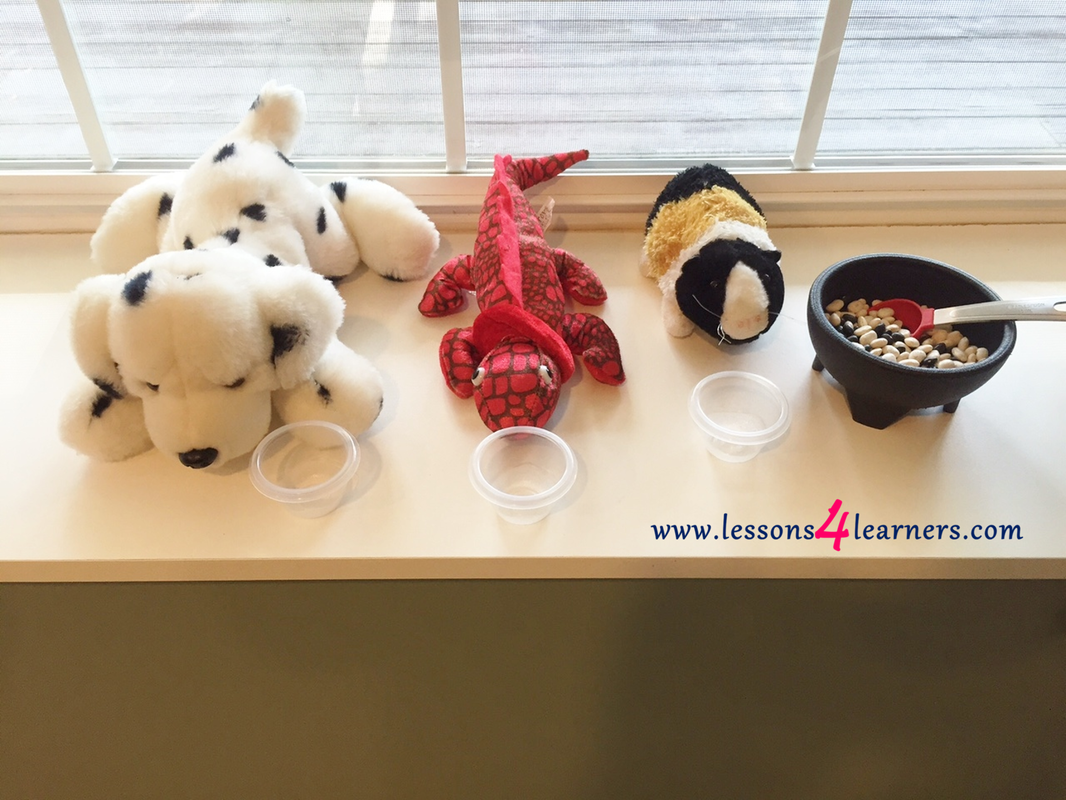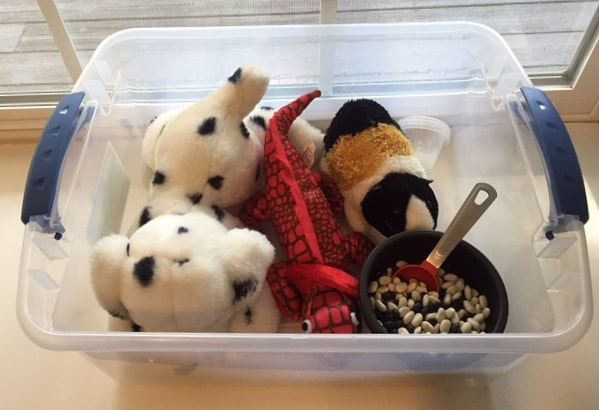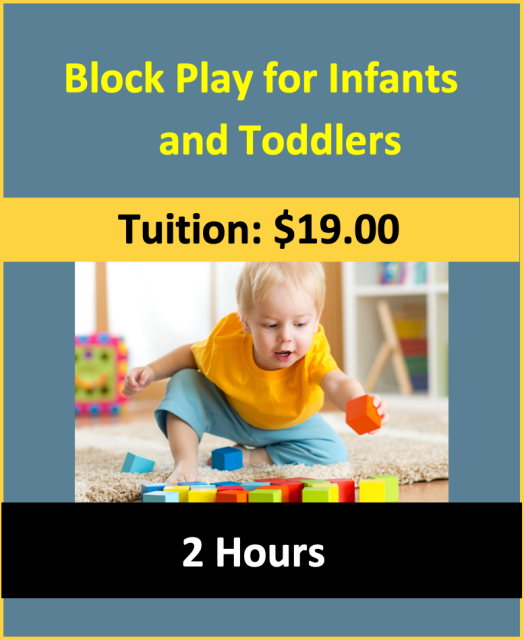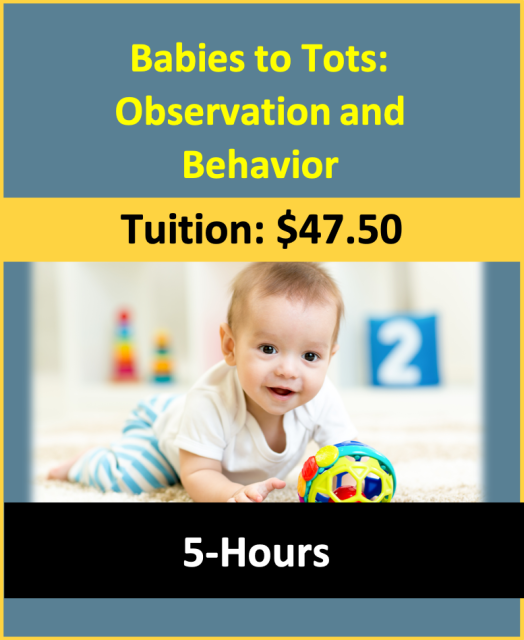Pet Food Pouring
Lesson Plan:
|
Activity:
Pet Food Pouring
Lesson plan developed by Aurora Tollestrup, BS Ed.
Age Group:
* Lesson plan objective and assessment can be adapted to use this activity with preschoolers.
Objectives:
Children will:
|
|
II.4.2a
Materials:
|
Procedure:
- Read Pet Show by Ezra Jack Keats, discussing the pets in the book as you go.
- When finished discuss what pets need to stay happy and healthy.
- Place materials in a shallow tray and place on a low shelf for easy child access.
- Provide a demonstration of how the materials should be used and stored and invite children to “feed” the pets by pouring the food into their bowls.
Assessment:
- Assess children upon the practice of their small motor skills and development of these skills.
Extension:
- *When pouring becomes easier, try changing the pet "food" to sand or salt and using different tools to pour.
- *Add an eye dropper, small bottle of water, and a small water dish for each "pet" in addition to the "food."
Note: Please provide appropriate supervision to the children in your care when completing all activities. You will need to decide what types of activities are safe for the children in your care. Appropriate and reasonable caution should be used when providing art and sensory experiences for children. Toddlers require special caution, only use non-toxic materials, and do not allow toddlers to put things in their mouths that are a choking hazard.
Click on the course icon for enrollment information.
Author: Ezra Jack Keats
Ezra Jack Keats was born Jacob Ezra Katz to Polish Jews Benjamin and Augusta Katz in Eastern New York City on March 11, 1916. He was the youngest of three children growing up very poor in the midst of a difficult economic time in the United States. Keats was a talented artist from an early age and at around 8 years old he was hired to paint a sign, giving his father some glimmer of hope that his son would make something of himself, as he was apprehensive about Keats’ artistic focus. Keats continued to be a successful artist throughout school winning several awards but the day before his high school graduation, he learned that his father had died suddenly of a heart attack in the street. Keats, sadly, had to identify his father’s body and was faced with learning his father’s true feelings about his son’s artistic side. Keats later told a friend: “I found myself staring deep into his secret feelings. There in his wallet were worn and tattered newspaper clippings of the notices of the awards I had won. My silent admirer and supplier, he had been torn between his dread of my leading a life of hardship and his real pride in my work.”
|
Now that Keats’ father had passed away, he was unable to attend art school even though he had earned three scholarships to do so. Instead he had to work to support his family in his father’s absence taking a job as a mural painter for the Works Progress Administration (WPA) and as a comic book illustrator for the Captain Marvel comic strip. He also took art classes when his schedule allowed, further honing in his craft and passion for art. In 1943 he joined the military and spent his enlistment designing camouflage patterns. It was after experiencing a great deal of anti-Semitism in the military and throughout his life that he decided to legally change his name to Keats.
|
Later, he would travel to Europe and his work would appear in many major publications such as Reader’s Digest and more. Eventually one of his pieces was spotted by an editor for a major publishing house and Keats was brought on board to illustrate children’s literature. Over the course of a very long and popular career, he illustrated over 85 children’s books and wrote and illustrated 22 of his own. Ezra Jack Keats is an American treasure and has touched the lives of countless children over the years.
|
Keats's Neighborhood: An Ezra Jack Keats Treasury
|
John Henry: An American Legend
|
A Letter to Amy
|
Source & References
- Ezra’s Life from The Ezra Jack Keats Foundation http://www.ezra-jack-keats.org/ezras-life/
- Encouraging Self-Expression Through Art by Grace Hwang Lynch http://www.pbs.org/parents/education/music-arts/encouraging-self-expression-through-art/











